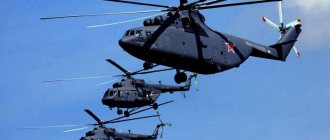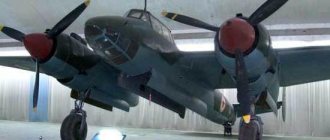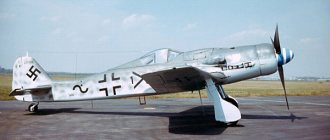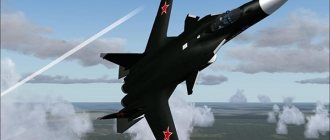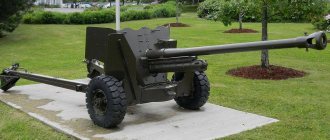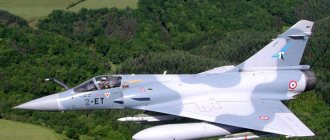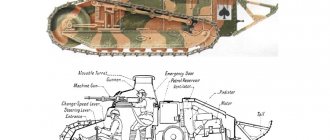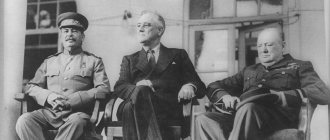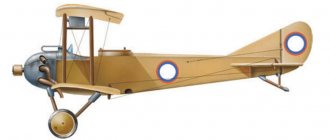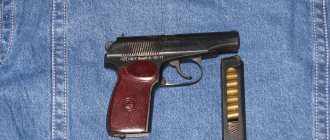History of the creation of the MiG-29 fighter
Military aviation equipment in the USSR was created in parallel with new developments by NATO. The Soviet Union, looking back at the achievements in the field of military aircraft industry of the United States, Germany, and France, tried to keep up. Design bureaus of Sukhoi, Mikoyan, Gurevich, Yakovlev constantly worked to create aircraft capable of surpassing NATO technology.
The design of the MiG-29 aircraft began back in 1969. The USSR Air Force required a promising fighter (PFI) with an increased range, excellent maneuverability, and a speed above 2 M. The machine was supposed to lift heavy weapons into the sky. The new aircraft was supposed to be used on short runways. The PFI project was quite expensive. It was decided to produce light and heavy aircraft separately. The MiG-29 belonged to the light class. Its design has been carried out since 1974 by the Mikoyan Design Bureau.
The fighter made its first flight in 1977. Serial production began in 1982. The delay in production occurred due to the fact that the first aircraft had many defects, and two aircraft crashed during testing. MiGs were produced by Moscow Aviation. In 1983, the vehicles were sent to the Kubinka airbase for service. After successful testing of the MiG-29 at the Flight Research Institute. M. M. Gromov aircraft were sent to the First Fighter Aviation Regiment near Ivano-Frankivsk.
This development had many modifications. Some models were exported. Additionally, a carrier-based and training MiG-29 was created. Aircraft were produced at MAPO named after. Dementyev and at the aircraft plant in Nizhny Novgorod. Nowadays, the improvement and production of fighters is carried out in the Moscow region at the MiG RSK in Lukhovitsy. Since 1982, 1,600 units of equipment have been manufactured. There are about 270 MiG-29 aircraft in the Russian Air Force fleet.
Flight tests
“Program 9” successfully reached the “9-12” project, which was chosen for implementation in the form of the first flight prototypes. On October 6, 1977, the aircraft with the designation “901” on the fins and “01” on the air intakes (pilot A.V. Fedotov) made its first flight. Gradually, within the framework of “Program 9”, 18 more prototypes were built, which were designated 902-919 (the literature also mentions 02-19 or 9-02 to 9-19). They tested the declared characteristics of the machine and systems. On their basis, further options were developed within the framework of “Program 9”. At the same time, the final versions were finalized for serial production and subsequent operation.
Unfortunately, there was also a sad tradition that accompanies the creation of something fundamentally new. Two cars were lost due to engine failure - 06/16/78 and 10/31/80.
Apart from this, the tests were successful. The design of the “29th” turned out to be very successful. The designers managed to cut the “Gordian knot” of contradictions between the highest requirements for flight performance and the limited economic and technological capabilities of their country.
Features and Benefits
The MiG-29 can reach speeds of up to 2,450 km/h and rise into the sky to a height of 18 km. The plane has two engines, but can only take off on one. Directly in flight, starting the second engine.
Performing a bell aerobatics maneuver, the plane takes off sharply vertically upward, and then freezes and quickly falls down, while the fighter disappears from the radar field of view for some time. Ace pilots can perform other aerobatic maneuvers on the MiG-29: “pyramid”, “hammer”, “cross”, “arrow”, “star”.
Aerobatic figure "bell"
The aircraft has innovations in the fuselage, due to which its aerodynamic characteristics have improved compared to earlier models. The body was made of aluminum and lithium alloys, and riveted joints were replaced with welded seams. The weight of the car has become less.
The housing is made of materials that absorb radio waves. The plane became less noticeable on radar. The MiG designers designed the wings sharper, thereby improving the quality of control of the aircraft even at high speeds.
The aircraft is equipped with rockets, bombs, and a cannon. The aircraft can accompany heavy bombers and cover them from enemy fighters. The light MiG is capable of flying reconnaissance missions. The fighter's armament is designed to intercept air targets, counter enemy reconnaissance assets, and destroy enemy aircraft.
Another development that provides the MiG-29 pilot with a clear advantage in combat is a helmet with a monocular sight. The pilot can catch a target and fire an R-73 missile at it even when the nose of the aircraft is pointed in the other direction.
Aircraft of this version can be on the front line and provide the army with an offensive. MiGs can take off from unprepared runways. The planes have closing lower air intakes and reinforced landing gear.
The MiG-29 can take off quickly. Its rate of climb is 330 m/s. The vehicle takes turns with small radii and maneuvers perfectly in the horizontal and vertical plane. In 1988, a new model was released that could take off and land on an aircraft carrier. The aircraft could fold its wings for a more compact placement on board a ship. The MiG can perform almost vertical takeoff (with a very short takeoff run), but is not capable of taking off from under water.
The first aviation regiment to begin mastering the MiG-29 was the Swifts air group. In 1986, pilots on 6 aircraft visited the Finnish airbase of Rissala. It was then that this Soviet fighter was first demonstrated to the foreign community. In 1988, at the Farnborough International Exhibition, where this aircraft was shown, experts were struck by the fact that the aircraft's fuel consumption was 15% lower than its NATO counterparts. For the international presentation, Soviet cars came up with an interesting design. The plane was painted blue and red and the word “Swifts” was written on the nose. Since then, the MiG-29 began to be called swifts.
Performance
In November 1977, the first experimental MiG-29 was photographed in Ramenskoye by an American reconnaissance satellite and received the “identification” designation RAM-L.
In January 1986, MiG-29s began to be operated at foreign bases of the USSR (in the GDR). On July 1, 1986, six MiG-29s were first officially shown to the Western public during the visit of pilots of the 234th IAP (Cubinka) to Finland at the Rissala-Kuopio airbase. In August 1988, the MiG-29 was the most interesting exhibit at the Farnborough Air Show (England).
On May 20, 1989, the new aircraft first appeared in the West with weapons. On this day, Soviet pilot Alexander Zuev flew a MiG-29 at high speed to Tubzon, Turkey; where he landed at 5:00 local time. The USSR demanded the return of the plane along with the pilot, who was accused of a criminal offense in his homeland. The Turkish authorities made a decision within 30 hours and returned the plane to its base in the USSR, despite protests from the US Embassy, which insisted on transferring the plane to American specialists for detailed study, citing the fact that Turkey is a NATO member.
As a countermeasure (as always, after an emergency), training was organized at Soviet bases to quickly block runways with cars.
Technical and flight characteristics
Flight and technical parameters:
- crew - 1–2 people;
- length and height - 17.32 and 4.73 m;
- wingspan - 11.36 m;
- empty weight - 10.9 tons;
- Max. take-off weight - 18.4 tons;
- fuel reserve - 4,300 l (inside) and 1,500 l (PTB);
- ascent height - 18 km;
- maximum speed - 2,415 km/h;
- flight speed at the surface of the earth - 1,500 km/h;
- flight range when fully refueled - 2,000 km (3,200 km with three outboard fuel tanks);
- rate of climb - 330 m/s;
- landing speed - 260 km/h;
- combat radius - 710 km;
- ammunition load - 3,000 kg;
- motor - 2 (TR DD F RD 33).
Design Features
The aircraft is designed using an integrated aerodynamic design. It has a double fin and a low wing. The airframe is made of steel, aluminum and titanium alloys, and composite materials. The wing sweep angle is 42 degrees along the leading edge. The wing contains deflectable leading edges, slotted flaps and semi-opening ailerons. The chassis is tricycle. The front rack has 2 wheels. The main ones are one wheel at a time.
MiG-29 layout diagram
Fighter weapons
Military weapons:
- combat load - 3,000 kg on 6 or 8 suspension points;
- GSh 30 1 cannon with 150 rounds;
- Air-to-air missiles - R 27, R 73, R 60;
- "air-to-ground" - FAB 250, FAB 500;
- cassette KMGU 2;
- NUR blocks 57 mm, 130 mm, 240 mm;
- RN 40 atomic bomb.
Engine
The aircraft has two RD 33 turbojet engines. They have low-pressure compressors with 4 stages. Moreover, high pressure is created by a 9-stage compressor. RD 33 develops a thrust of 81.42 Kn. This thrust-to-weight ratio could not be exceeded by any foreign analogue.
Fuel consumption for the engine at maximum is 0.77 kg/kgf*h. Engine weight - 980 kg. The engine is smokeless, with liquid injection during landing. The fuel system consists of 5 fuselage and 2 wing fuel tanks. tanks Their total capacity is 4,300 liters.
Radar
The aircraft is equipped with SAU-451, AU system, SOS-3M, and limit signal equipment. The armament is controlled by the SUV-29, which includes the Ts100 on-board computer and the RLPK-29 (“Sapphire-29”).
The MiG is equipped with the SN-29 navigation system and the OEPrNK-29 complex. An indication system with a photocontrol device is installed on the windshield. The fighter has the Biryuza switchgear equipment, a PPI-26 decoy release mechanism, a radio jamming station, and an SPO-15LM Bereza.
Cabin
The cockpit canopy is drop-shaped. The visor has no bindings and is capable of providing good visibility in flight, during landing and takeoff. The cabin is spacious and equipped with a K-36DM ejection seat. The pilot can leave the aircraft even at minimum altitude. The instrument panel is like that of a Su-27.
Development
Detailed development of the MiG-29 project began in 1971, when the YF-16 had already made its first flights in the United States.
At this time, some progressive methods of aircraft design, new structural materials, and new technologies were already being introduced in the USSR. But at the same time, the designers of the MiG Design Bureau became hostages of the old administrative-command (directive) system of economic management, one of the features of which, in particular, was a ban on access to world “know-how”, which hit the on-board electronics the hardest new MiG. From the very first moments of design, designers had to think about the greater weight of built-in systems and equipment than in the West, which increased the overall weight of the aircraft. The large volume of equipment reduced the amount of fuel on board and shortened the range.
The aircraft's controllability was limited by the capabilities of the classical mechanical control system.
But, despite this, the aircraft had to be the best in its category and could perform a wider range of tasks than its competitor.
Much attention was paid to the aerodynamics of the aircraft. After extensive testing in the T-105 TsAGI wind tunnel (during which the qualities of foreign aircraft designs YF-16, YF-15, YF-17 were also studied), an integral airframe design was chosen with very careful observance of the “area rule” from the tip of the PVD to the nozzle exit
The fuselage, through a pronounced vortex generator (influx), smoothly transitions into a trapezoidal wing with a classic profile and twist along the leading edge. The picture was complemented by two slightly collapsed keels and engine nacelles separated under the fuselage.
One of the most difficult problems turned out to be the power plant. Double-circuit turbofan engine RD-33 (product “88”) designed by NPO im. Klimova (Leningrad) began to be designed back in 1968. In 1972, its bench tests began, and in 1976, pilot production began. A very big drawback of the early models was the high accident rate and short service life.
Previously, an unprecedented measure in the development of the two projects was the massive use of systems common to the MiG and Su Design Bureaus - weapons, radio equipment, pilot seats, parts of sights, etc. (even the aerodynamic concept was largely common).
In the first half of the 70s, the development of the air-to-air missile R-27 (OKB Vympel) began, which had a modular design (a very high degree of unification, including interchangeable heads and rocket engines). Some small parts in its design were borrowed from the American Sparrow missile, which was tested in the USSR in 1968...71. (For example, it was a hydraulic aileron control system).
In 1873, after just 4 years of development, serial production of the R-60 air-to-air guided missile (OKB Molniya), designed for close-in maneuverable air combat, began. High maneuverability of the guided missile is ensured by the increased area of the wing and rudders, and the destabilizer on the head part. The combat effectiveness of the P-60 was confirmed in 1982 in air battles between Syria and Israel. The modernized version of the R-60M was supposed to be carried on the MiG-29 in the form of temporary weapons and for export.
The main armament of the MiG-29 in maneuverable air combat is the R-73 air-to-air missile (OKB Vympel). The limited capabilities of the fighter aircraft were expanded by the uncompetitive maneuverability of the R-73. This was achieved by a combination of classic ailerons and variable thrust vectoring of the rocket engine. The increased range of the missile allows you to hit the target even on the threshold of the so-called. "medium range".
And, although the R-73s have been in operation since the mid-70s, they still have no analogues in the world. Moreover, there are already modernized versions of the R-73.
The N-019 Topaz locator () consists of a number of modules identical to the radar of the Su-27 aircraft. The pulse-Doppler system allows you to detect air targets both in free space and against the background of the earth (and at almost the same identical ranges). The radar has a limited attack capability only at angles close to 4/4 (perpendicular to the target's course).
In 1980, the production of standardized K-36 ejection seats was started, providing for ejection of the aircraft at speeds of 75...1500 km/h and altitudes of 0 m (up) and 200 m (down). There are known cases of pilots being rescued at speeds of more than 2000 km/h, as well as several meters from under water
MiG-29 modifications
Developed modifications:
- MiG-29 - single-seat aircraft;
- MiG-29 K - carrier-based fighter and bomber;
- MiG-29 KVP - an intermediate model for training pilots to take off from the deck of an aircraft carrier;
- 9-41 - naval fighter;
- MiG-33 - MiG-29M;
- MiG-29M/OVT - experimental model with deflectable thrust vector;
- MiG-29UPG - an improved model for the Indian Air Force;
- 9-13 - the next production version, in service since 1986, additionally equipped with Gardenia electronic warfare equipment, BVP-30-26M, a larger fuel capacity, and a combat load of 3200 kg;
- MiG-29SMT - modernized export version, created in 1994;
- MiG-29UBT - 2-seat, produced since 1998;
- 9-12 - production model, in service since 1983, ammunition load weight 2 tons;
- MiG-29AS - improved, for export to Slovakia with new avionics;
- MiG-29SM - an improved version, has new “V-P” bombs;
- 9-31 - shipborne, developed in 2004 for the Indian aircraft carrier Vikramaditya;
- MiG-29M - with improved equipment, has a “V-P” missile launcher;
- MiG-29MU1 - Ukrainian improved model with improved navigation;
- MiG-29UB - 2-seat combat training aircraft, space for the designer was placed by reducing the radar, in operation since 1985;
- 9-12B - export version for other states that are not members of the Department of Internal Affairs, the control of the missile defense system was changed, the ammunition included R-27R1 and R-27T1;
- MiG-29M2 - 2-seater, with a longer flight range and payload;
- MiG-29N - developed for export;
- MiG 29KUB - export, deck;
- MiG-29BM - Belarusian modernized model with an updated radar;
- MiG 29S - 3-series model, with RVV-AE missile launcher and modern control system, combat load weight 4,000 kg;
- 9-12A - export model for the Warsaw Pact states, with modified RLPK-29, R-27R1 and R-27T1 ammunition;
- MiG-29 Sniper is an improved Romanian modification.
Has the MiG-29 lost its former relevance and become outdated?
Not really
Serial production and export
The MiG-29 is operated not only in Russia, but also in other countries of the world. Old models are gradually being phased out. They are being replaced by new versions - MiG-29SMT and others. Algeria purchased 24 aircraft, but then returned them back. Bangladesh bought 8 aircraft in 1999. In Belarus, Turkmenistan, Uzbekistan, Ukraine and other former republics of the USSR, MiGs remained after the collapse of the Union.
Egypt has ordered 46 aircraft. Malaysia has already received 18 cars. Sudan received more than 12 aircraft. Syria received 62 MiGs. Iran - 36, India - about 80 aircraft. A total of 800 fighter aircraft were exported to 30 countries. The cost of one MiG on the world market is $22 million.
